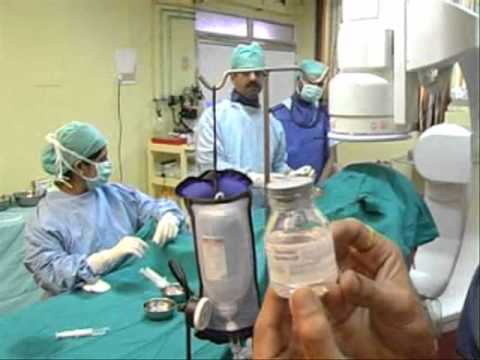Since the introduction of Angiography or arteriography, its considerable potential in the diagnosis and management of cerebrovascular disease has been apparent. At first, its use was hampered by a high incidence of complications including transient or permanent worsening of neurologic defects, transient delirium, convulsions, hypotension, and’, occasionally, death.
The incidence of these adverse reactions has declined sharply in recent years as a result of improved contrast media, improved skill in cannulating arteries, and the use of techniques in which the contrast medium is injected peripherally. With these advances, transient complications develop in about 1 to 2 per cent of patients with cerebrovascular disease, and permanent worsening and death follow arteriography in less than. 1 per cent of patients.
What Is Angiography;And What Is The Examination of Angiography
Cerebral angiography is indicated only for certain patients with cerebrovascular disease and has two main values. The first is in differential diagnosis. For the patient with an atypical history and findings, or who is unable to give an accurate history because of dysphagia or depressed consciousness, cerebral angiograms help to exclude remediable causes of illness, such as subdural hematoma or brain tumor. In the author’s series of patients with suspected cerebrovascular disease, angiograms changed the clinical diagnosis of cerebrovascular accident in about 5 per cent of patients, particularly among those unable to give a history. The lesions most frequently revealed were subdural hematoma, brain tumorsv, and, less often, arteriovenous anomaly.
The second and more important value of cerebral angiograms is the accurate demonstration of the site, extent, and incidence of arterial Obstructions that might be susceptible to surgical correction. Patients with such lesions include predominantly those who suffer transient ischemic attacks or incomplete strokes from which recovery logic deficits and increasing or beginning impairment of consciousness are frequent.
This change may indicate extension of the cerebral infarction, but usually is associated with cerebral edema in and around the necrotic area. Some degree of cerebral edema complicates every infarct. It appears almost immediately, and with large infarctions may be so extensive as to shift the brain laterally and downward to produce herniation through the tentorium cerebelli and subsequent brainstem compression.
This course of events, with its associated impairment of consciousness and other vital functions, is a common cause of death in patients with extensive infarction. The diagnosis of cerebral edema is especially likely when a patient shows a decline in awareness without a significant increase in focal neurologic deficits. Other causes of lethargy and. stupor in patients with cerebral infarction are fever, electrolyte imbalance, the injudicious use of sedatives, tranquilizers or narcotics, and malnutrition.
In patients whose course is not complicated by severe cerebral edema, there is usually an early improvement in neurologic function. If some voluntary movement is preserved, there is a good chance for return of more. When function improves rapidly after the onset, the outlook for a good recovery is excellent. A slow return of function over weeks or months is associated with a less complete recovery. If flaccid paralysis is present from the onset with no return of increased muscle tonus over 30 to 60 days, the outlook for recovery is poor, since a gradual change from flaccidity to spasticity always precedes the advent of voluntary movement. Significant sensory loss impairs the chances of recovery of motor function.
With brainstem infarction, the course is usually one of gradual improvement if the infarct is localized in the lateral medullary area. Symptoms of nausea, diplopia, and ataxia lessen and eventually disappear. Although some residual impairment of eye and extremity movement may be detected on examination, such patients often have little physical limitation. It is important to realize that recovery from cerebral infarction with impaired neurologic function may continue for as long as one to two years.
